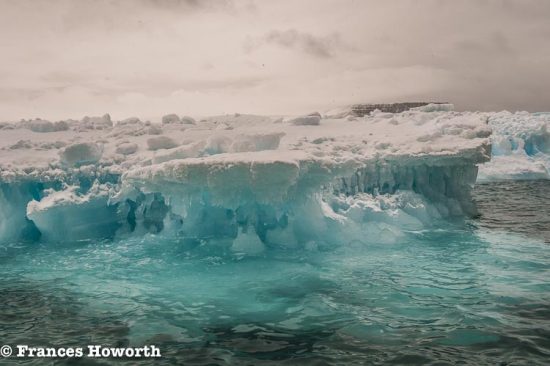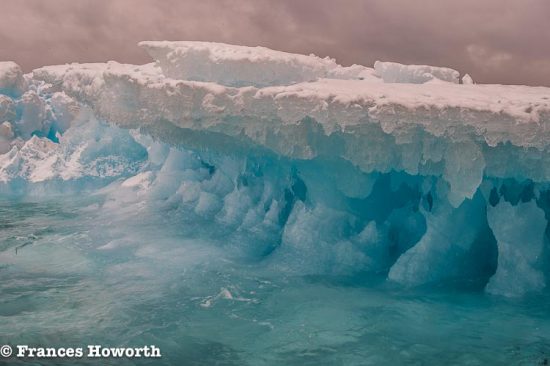
One of the things you have to accept when sailing in an expedition vessel is that the published itinerary is only a guide. Each day we see our expedition staff huddled together pouring over ice distribution charts. Areas of heavy ice are shown coloured red and the charts they are studying look very red to us. It comes as no surprise therefore that after our call at Beechey Island we are to turn south, abandoning the northern route and opting for the more complex southern route favoured by the likes of Franklin. Had we continued along the northern route we would have called at Bathurst Island a major calving area for the endangered Peary caribou. It is the site of a Polar Bear Pass National Wildlife Area, a migratory route for polar bears from March to November. The north half of the island is the proposed Tuktusiuqvialuk National Park. From Bathurst our route would have continued westwards to Melville Island discovered by the British explorer Sir William Parry in 1819.
Melville Island is one of two major breeding grounds for a small sea goose, the western High Arctic Brant. DNA analysis and field observations suggest that these birds may be distinct from other Brant stocks. Numbering only 4,000-8,000 birds, this island is home to one of the rarest goose stocks in the world.

Further west; Banks Island is where two federal Migratory Bird Sanctuaries were founded in here in 1961. The island is home to two thirds of the world’s population of lesser snow geese, and also supports barren-ground caribou, polar bears, and birds like robins and swallows. The Wet grizzly-polar bear hybrid found in the wild was sighted here in April 2006, near Sachs Harbour. Musk ox, numbering over 40,000 are the most striking of the abundant wildlife on the island.
From here we would have sailed south through the Prince of Wales Strait and onto Ulukhaktok (Holman) on the west side of Victoria Island.
The Hudson’s Bay Company had first opened this trading post at Prince Albert Sound in 1923 and this was moved to Walker Bay in 1928. Finally it was moved to Holman in 1939.
The large bluff that overlooks Ulukhaktok was the source that provided the slate and copper used to make ulus the traditional lnuit knives end gives the community its name. Printmaking is popular in Ulukhaktok as are the beautifully intricate pieces carved from the horns of the abundant local musk ox population The musk ox also provide the community with qiviut, one of the warmest and most luxurious fibres in the world used to make all manner of clothing and coverings.
Frances and Michael Howorth explored the North West Passages onboard Ocean Endeavour with the help of Destination Canada www.destinationcanada.com and Adventure Canada www.adventurecanada.com We are truly grateful to them both for the opportunity they provided with us to do our job.
